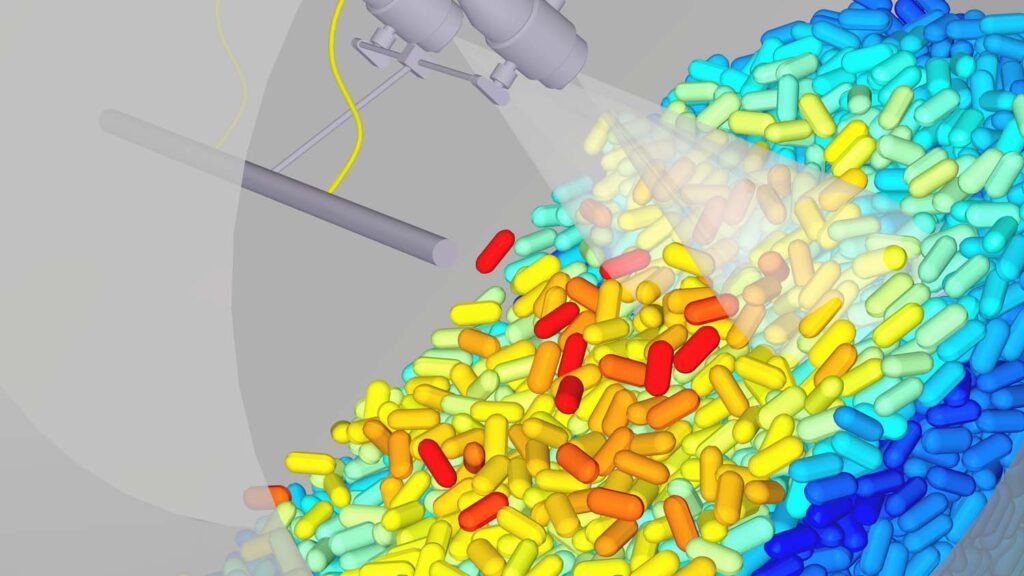ESSS and Ansys are working to improve Discrete Element Modelling (DEM) workflows for quickly analysing and assessing particle movement.
Interoperable with Ansys’ flagship solvers (Fluent and Mechanical), the new workflow, called Ansys Rocky, helps engineers ‘design highly reliable products, slash development time and win the race to market’.
According to Ansys, nearly 70 per cent of industrial products experience bulk granular material flows, where different-sized particles with complex shapes interact, potentially impacting a product’s efficiency or structural integrity.
To overcome this difficult design challenge, engineers require DEM, coupled with structural and fluid analysis, to assess the flow behaviour of these granular particles early in the design phase.
The new workflow is a robust 3D DEM solution for tackling particle movement design issues. It uses the multiple GPUs simultaneously to analyse bulk material flow systems 20-90x faster, Ansys Rocky runs high-fidelity, uncompromised massive particle models.
It is integrated with Ansys Fluent and Ansys Mechanical and swiftly simulates fully coupled fluid and structural systems’ bulk material movement and reaction to forces such as gravity and adhesion, ensuring new products are more reliable than ever.
“We welcome the news of the agreement between Ansys and ESSS. As you can imagine, most products we design and manufacture involve particulate systems and are inherently multi-components and multiphysics,” said Lei Zhao, R&D director at PepsiCo.
“R&D and engineering teams at PepsiCo rely on Ansys Fluent to perform computational fluid dynamic analysis and Ansys Rocky to perform particle dynamic analysis to ensure product quality and optimise manufacturing processes.
“The results are a shorter product development cycle with less waste and more efficient processes that help meet the growing demand for healthier and more environmentally friendly products.”
Ansys claim that unlike a traditional DEM code, Ansys Rocky accurately models particles shapes including arbitrary 3D shapes, 2D shells and flexible fibre, helping engineers quickly solve challenging design problems with very complex geometric design variations.
“The ability to model large number of particles with real shapes, ranging from a pharmaceutical tablet to potato chips, has expanded Rocky’s reach from traditional sectors, like heavy machinery, to new areas such as agriculture, battery design and additive manufacturing,” said ESSS CEO Clovis Maliska, Jr.
“Additionally, Rocky’s integration into Ansys’ workflow extends the power of DEM analysis beyond design centres and brings simulation into manufacturing, operation and production, enabling companies to optimise the production, transportation and packaging material handling of bulk and discrete particle systems.”
Ansys suggests that Rocky delivers unique usability, portability, solver performance and multi-GPU acceleration to cost-effectively calculate particle transport.
“Ansys Rocky incorporates the latest technology advances in customisation and user experience integration to augment fluid and structural mechanics with particle mechanics, enabling customers to understand how their products will perform across thousands of real-world operating scenarios,” said Ansys senior VP Shane Emswiler.
“From modelling complex shapes to flexible fibres, Ansys Rocky combines its multi-GPU capabilities with Ansys’ flagship simulations — empowering our customers to rapidly run large, highly realistic simulations that include key bulk material details.”






